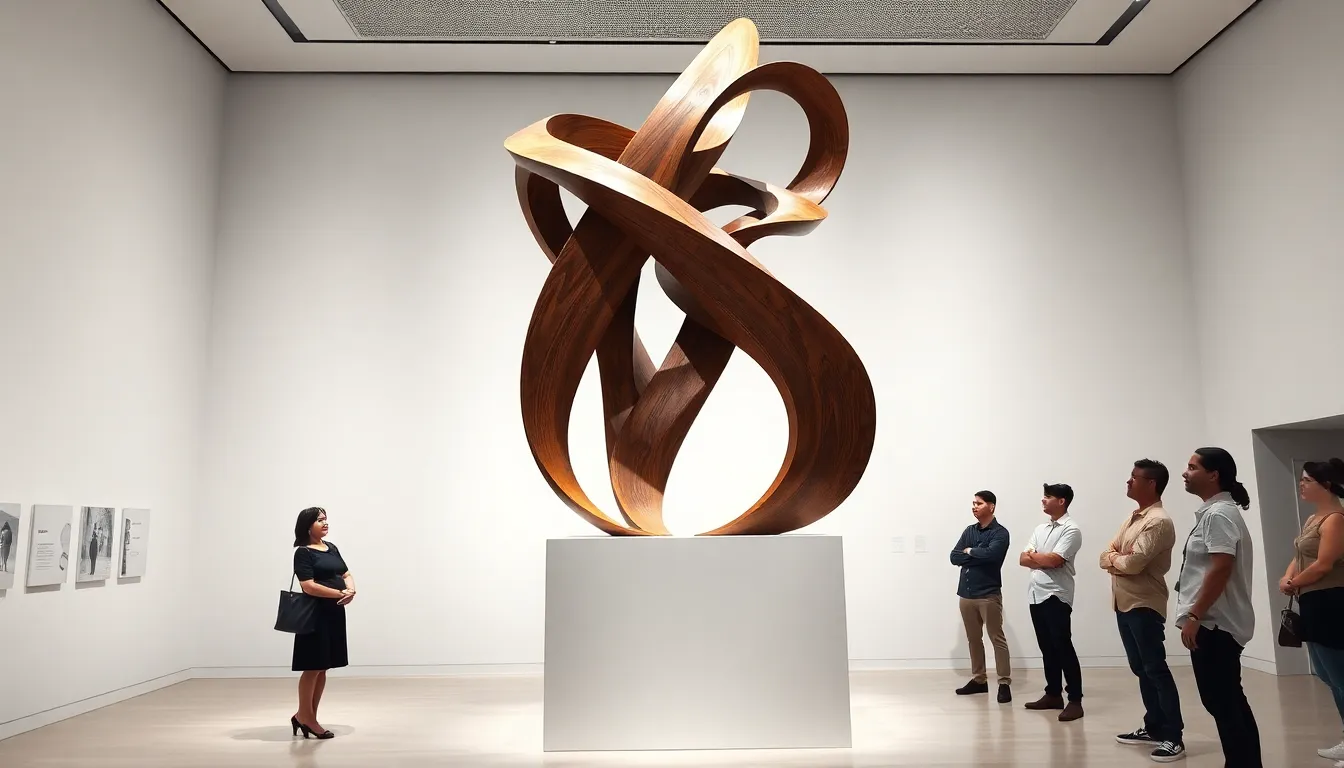Table of Contents
ToggleLooking for a conversation starter? Look no further than abstract wood sculptures. These captivating pieces are more than just wood: they encapsulate emotions, narratives, and sometimes even a touch of humor. Carved from the very earth that birthed them, these artworks challenge perceptions and beckon viewers to explore their depths. Ready to jump into the intertwined history, techniques, and contemporary implications of abstract wood sculpture? Let’s get started.
Understanding Abstract Wood Sculpture

Abstract wood sculpture defies traditional artistic boundaries. It encourages viewers to interact with art on an emotional level, exploring forms and textures that may not represent the physical world directly. Instead, it speaks through shapes, shadows, and angles. This style of sculpture can evoke feelings of tranquility, chaos, or curiosity, depending on the artist’s intent.
As a dynamic art form, abstract wood sculptures often encourage the audience to interpret what they see rather than dictate a specific message. This makes every encounter with the sculpture unique, as each viewer may interpret the piece based on personal experiences and emotions.
The History of Abstract Sculpture
The roots of abstract sculpture can be traced back to the early 20th century, when artists began to break away from traditional forms. Influential movements such as Cubism and Futurism set the stage for this radical shift in artistic expression. Pioneers like Constantin Brâncuși and Henry Moore emerged, emphasizing form and material essence over representational accuracy.
Fast forward to the present day, and abstract wood sculpture has evolved dramatically, embracing various cultural influences and techniques. Artists worldwide continue to redefine this genre, marrying traditional craftsmanship with modern aesthetics, which keeps things fresh and exciting.
Techniques Used in Creating Abstract Wood Sculptures
Creating abstract wood sculptures is an intricate dance of techniques, each adding a layer of depth to the final piece. Artists primarily rely on carving methods, but other techniques can bring aesthetics to life.
- Carving: This is the most common technique, where tools chip away wood to reveal the desired shapes. Artists may use chisels, gouges, or power tools to achieve different effects.
- Assembly: Some sculptures are designed by joining multiple wooden pieces, creating a sense of movement and structure.
- Lamination: Artists can glue layers of wood together, shaping them to form complex, flowing shapes.
By mixing and matching these techniques, artists can push boundaries, creating innovative pieces that captivate audiences.
Materials for Abstract Wood Sculptures
When it comes to materials, wood remains a favorite for abstract sculpture. Its natural grain, texture, and warmth speak volumes about the artist’s intentions. Common types of wood include:
- Oak: Known for its durability and strength, oak offers a classic appeal.
- Maple: Its fine grain and light color allow for detailed carving and finishing.
- Cherry: This wood darkens over time, adding depth and character.
Artists may also incorporate unconventional materials like metal or glass into their wood sculptures, enriching the visual narrative and expanding the emotional resonance of the piece.
The Impact of Abstract Wood Sculpture on Contemporary Art
Abstract wood sculpture plays a vital role in contemporary art, challenging norms and opening dialogue. It invites viewers to question their preconceived notions about art, form, and meaning. In recent years, art exhibitions and galleries have increasingly featured these sculptures, creating platforms for artists to showcase their work and reach diverse audiences.
Also, as the world shifts toward sustainability, more artists are choosing reclaimed wood, reinforcing the environmental message through their creations. This aligns with global movements emphasizing eco-consciousness in art.
How to Select and Care for Abstract Wood Sculptures
Selecting an abstract wood sculpture can be an enjoyable experience, but it also requires some considerations. Here are a few tips to help navigate this journey:
- Consider Your Space: Ensure that the size and proportion harmonize with your existing decor.
- Explore Personal Resonance: Choose a piece that evokes an emotional response or curiosity.
- Evaluate Craftsmanship: Examine the quality of the piece, focusing on details such as finish, joinery, and overall design.
Caring for wood sculptures is relatively straightforward, but it does require a bit of attention. Keep the sculpture dust-free with a soft cloth and avoid placing it in direct sunlight or near heat sources. A suitable wood conditioner can enhance its natural beauty while preserving its integrity.




